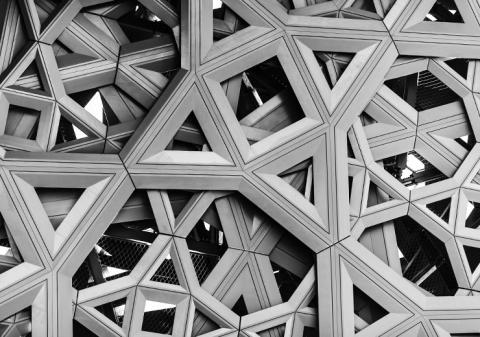TU Wien won grant to advance design tools for building planning through multi- and interdisciplinary basic research.
In the field of computer technology, many things are changing: virtual reality makes three-dimensional computer worlds tangible, robots are getting into everyday working life, modern algorithms are calculating realistic surfaces, and light and shadow effects in real time. However, many of these research findings have not yet taken hold in architecture and the construction process. That should change now.
The special research area (SFB) Advanced Computational Design, funded by the Austrian Science Fund (FWF), is intended to help close the gap between informatics on the one hand and architecture and construction on the other. The research project is headed by TU Wien, where six of the eight scientific subprojects are located. In addition, the University of Innsbruck and the TU Graz are also present. The SFB project will be funded with a total of €4.2 million over the next four years. It combines research groups from the fields of architecture, computer science, mathematics and civil engineering.
Methods That Promote Creativity
"Architecture and construction characterize our built environment, and with it our society in cultural, economic and ecological terms," says Prof Michael Wimmer from the Institute for Visual Computing and Human-Centered Technology at TU Wien Informatics. "However, digitization is not particularly advanced in this area."
Often the process runs from the first architectural idea to the finished building in separate steps, using very different tools. The first draft may be drawn on paper, eventually a plan is entered into the computer, then the building is visualized three-dimensionally, and then perhaps it is considered how the lighting can be designed. "That's not really up-to-date anymore," says Michael Wimmer. "We want to bring all these steps together and provide computer-aided feedback in an early planning phase."
If you can already present the first, still vague ideas in digital form, you will reach the optimal solution much faster. Augmented reality and virtual reality can help here. The lighting situation can be simulated and changed dynamically, so that you get a feeling for the possibilities of the planned building in the first basic design. Even haptic feedback is being worked on: a robot arm provides the necessary back pressure so that you can even "feel" virtual structures. New methods in geometry and mathematics should make it easier to construct extraordinary shapes and implement creative ideas.
Project Subareas, Project Leaders, and Scientists
Project Coordinator
Michael Wimmer (TU Wien Informatics)
Integrating AEC Domain Knowledge - Synthesis 2.0
Iva Kovacic (TU Wien); Michael Hensel, Peter Ferschin (TU Wien)
Computational Immediacy
Kristina Schinegger (Universität Innsbruck); Stefan Rutzinger, Tobias Hell (Universität Innsbruck), Florian Rist (TU Wien)
Lighting Simulation For Architectural Design
Michael Wimmer; Georg Suter (TU Wien)
Large-Scale Haptic Feedback in Virtual Reality
Hannes Kaufmann (TU Wien Informatics); Christian Kern (TU Wien)
Higher Order Paneling of Architectural Freeform Surfaces
Martin Kilian (TU Wien); Udo-Hertrich Jeromin, Christian Müller (TU Wien)
Flexible Quad-Surfaces for Transformable Design
Ivan Izmestiev (TU Wien); Georg Nawratil (TU Wien)
Linking Mechanics to Form-Finding of Plant-Based Bio-Composite Structures
Josef Füssl (TU Wien)
Material- and Structurally Informed Freeform Structures
Milena Stavric (TU Graz)
About the SFB Advanced Computational Design
The main research question addressed by the SFB “Advanced Computational Design” is how to advance design tools and processes through multi- and interdisciplinary basic research in the areas of digital architecture, integrated building design, computer graphics and virtual reality, discrete and applied geometry, and computational mechanics. Architecture, Engineering and Construction (AEC) shapes our built environment, exerting substantial environmental, cultural and economic influence on society. However, it is among the least digitized industries, still caught in silo-thinking and sequential planning processes. The Information and Communication Technology field, on the other hand, is highly innovative, creating digital design tools that are well-founded in basic research, but often lack relevant domain knowledge, thus hardly meeting designers’ needs.
The SFB connects architecture, computer science, mathematics and engineering in order to develop advanced computational design tools able to incorporate implicit and explicit design knowledge. This unique combination of scientific disciplines and collaborative research with strong theoretical foundations aims to bring radical innovation in computational design by allowing immediate feedback already in early design phases and by expanding solution spaces by computing design variants that cannot be found by current methods. The fundamental computational tools and methods to be developed will be applicable in AEC and other fields of the creative industries. The SFB is structured into 8 scientific subprojects, with a total budget of 4.2M€ for the first funding period of 4 years. It brings together the Center for Geometry and Computational Design at TU Wien with researchers from University of Innsbruck and TU Graz.
